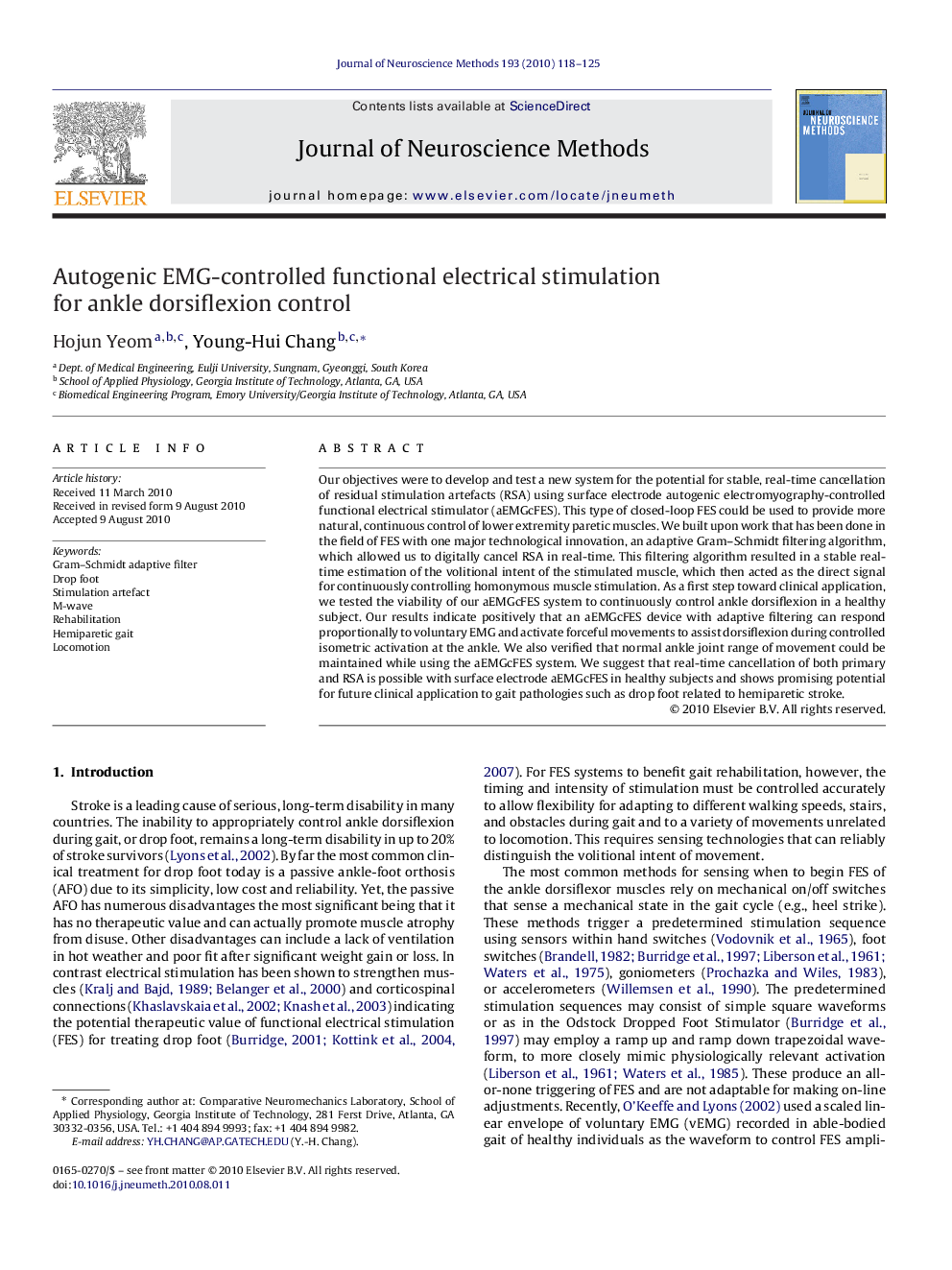| کد مقاله | کد نشریه | سال انتشار | مقاله انگلیسی | نسخه تمام متن |
|---|---|---|---|---|
| 4335507 | 1295157 | 2010 | 8 صفحه PDF | دانلود رایگان |

Our objectives were to develop and test a new system for the potential for stable, real-time cancellation of residual stimulation artefacts (RSA) using surface electrode autogenic electromyography-controlled functional electrical stimulator (aEMGcFES). This type of closed-loop FES could be used to provide more natural, continuous control of lower extremity paretic muscles. We built upon work that has been done in the field of FES with one major technological innovation, an adaptive Gram–Schmidt filtering algorithm, which allowed us to digitally cancel RSA in real-time. This filtering algorithm resulted in a stable real-time estimation of the volitional intent of the stimulated muscle, which then acted as the direct signal for continuously controlling homonymous muscle stimulation. As a first step toward clinical application, we tested the viability of our aEMGcFES system to continuously control ankle dorsiflexion in a healthy subject. Our results indicate positively that an aEMGcFES device with adaptive filtering can respond proportionally to voluntary EMG and activate forceful movements to assist dorsiflexion during controlled isometric activation at the ankle. We also verified that normal ankle joint range of movement could be maintained while using the aEMGcFES system. We suggest that real-time cancellation of both primary and RSA is possible with surface electrode aEMGcFES in healthy subjects and shows promising potential for future clinical application to gait pathologies such as drop foot related to hemiparetic stroke.
Research highlights▶ Electrical stimulation artifacts can contaminate recorded electromyography data. ▶ These artifacts prevent use of homonymous EMG signals for real-time FES control. ▶ Gram-Schmidt adaptive filters can extract volitional muscle activity in real-time. ▶ Autogenic EMG-controlled FES gives stable real-time estimation of voluntary intent.
Journal: Journal of Neuroscience Methods - Volume 193, Issue 1, 30 October 2010, Pages 118–125